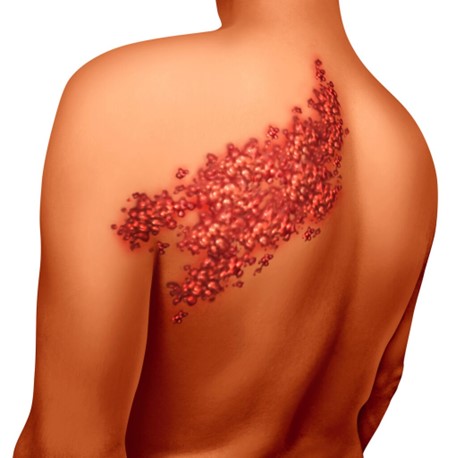A nurse is collecting data about immunizations from a 65-year-old client who has no identified risk factors for disease. The nurse should identify the client's need for which of the following immunizations?
Inactivated polio virus
Herpes zoster
Human papilloma virus
Measles, mumps, and rubella
The Correct Answer is B

The correct answer is choice B, herpes zoster. A 65-year-old client should receive the herpes zoster vaccine, which is recommended for adults over the age of 60 years to prevent shingles. Choice A is incorrect because inactivated polio virus vaccine is recommended for travelers to areas where polio is endemic or epidemic, and for laboratory workers who handle specimens containing poliovirus. Choice C is incorrect because the human papillomavirus vaccine is recommended for females aged 9-26 years and males aged 9-21 years. Choice D is incorrect because the measles, mumps, and rubella vaccine is recommended for individuals born after 1957 who have not had the vaccine or the diseases.
Choice A: Inactivated polio virus vaccine is incorrect because it is recommended for travelers to areas where polio is endemic or epidemic, and for laboratory workers who handle specimens containing poliovirus.
Choice C: Human papillomavirus vaccine is incorrect because it is recommended for females aged 9-26 years and males aged 9-21 years.
Choice D: Measles, mumps, and rubella vaccine is incorrect because it is recommended for individuals born after 1957 who have not had the vaccine or the diseases.
Nursing Test Bank
Naxlex Comprehensive Predictor Exams
Related Questions
Correct Answer is A
Explanation
"Consume 500 fewer calories per day than your estimated calorie needs." Consuming slightly fewer calories than one's estimated calorie needs can help promote weight loss in a healthy and safe way. Planningmeals so that up to 40% of calories come from fats is not typically recommendedwhen trying to lose weight, as too much fat can lead to excess calorie intake. Refined grains should be avoided in favor of whole grains, and it is not recommended to reward oneself with special foods for achieving short-termgoals.
Choice B: Planning meals so that up to 40% of calories come from fat is nottypically recommended when trying to lose weight, as too much fat can lead toexcess calorie intake.
Choice C: Refined grains should be avoided in favor of wholegrains.
Choice D: It is not recommended to reward oneself with special foods forachieving short-term goals.
Correct Answer is D
Explanation
The correct answer is choice D. The nurse should identify an oral temperature of 39°C (102.2°F) as the priority finding in a client who is postoperative following a total thyroidectomy for hyperthyroidism. An elevated temperature can indicate infection, which is a risk after surgery. The nurse should report this finding to the provider immediately.
Choices A, B, and C are incorrect because moderate amount of serosanguineous drainage on dressings, serum calcium level 9.2 mg/dL, and report of a sore throat, respectively, are expected findings after a total thyroidectomy and do not require immediate action.
Whether you are a student looking to ace your exams or a practicing nurse seeking to enhance your expertise , our nursing education contents will empower you with the confidence and competence to make a difference in the lives of patients and become a respected leader in the healthcare field.
Visit Naxlex, invest in your future and unlock endless possibilities with our unparalleled nursing education contents today
Report Wrong Answer on the Current Question
Do you disagree with the answer? If yes, what is your expected answer? Explain.
Kindly be descriptive with the issue you are facing.
